Anterior Hip Pain
On page cat links
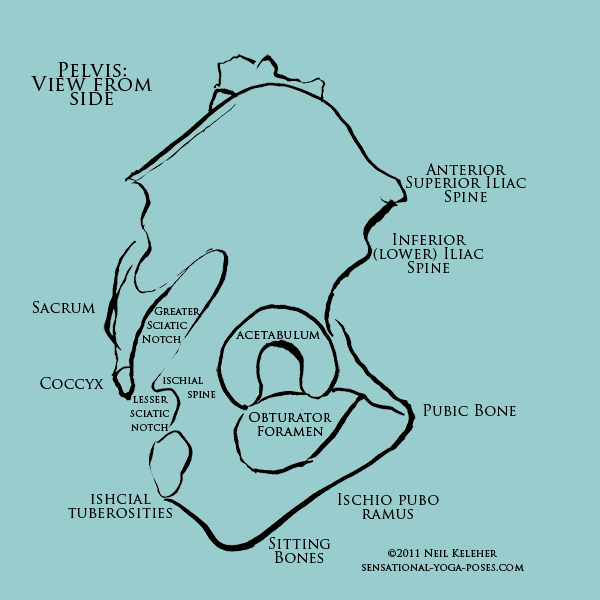
When dealing with anterior hip pain (by yourself) it helps to be specific about where exactly the hip pain is.
To do that it helps to have some basic landmarks of the pelvis.
On page cat links

When dealing with anterior hip pain (by yourself) it helps to be specific about where exactly the hip pain is.
To do that it helps to have some basic landmarks of the pelvis.
If dealing with pain at the front of the hip these are probably the two most useful landmarks.
If dealing with pain at the rear of the hip, then you probably need to use the PSIC, SI Joint, tailbone (at the bottom of the sacrum) and sitting bones (or Ischial Tuberosities) as landmarks.
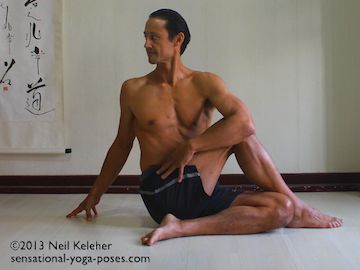
For any sort of pain that you can deal with yourself there are three basic things that you can do to alleviate the pain.
So lets say that you have pain at the front of the hip, near the ASIC. And this pain occurs when you flex and adduct and externally rotate the hip.
Say you are sitting down, you could pull your right knee to your chest, and then move the knee to the left while at the same time externally rotating the thigh so that you can hug the outside of your right leg with the inside of the knee facing the chest. (First picture below.)
You could do this with the knee straight or bent. Your left hip would then be flexed and adducted and externally rotated.
In the first pose shown below the top leg is flexed, externally rotated and adducted.
In the second pose the front leg hip is flexed. However, by adjusting the position of the pelvis you could create the equivalent of adduction and external rotation.
In the third pose you could do the same by moving the leg.

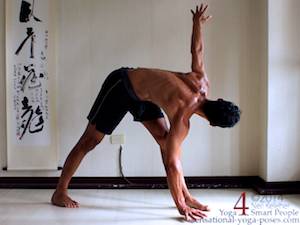
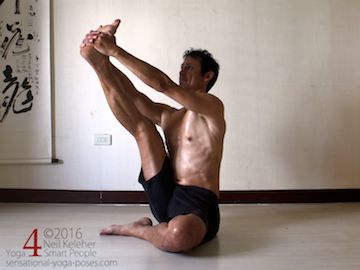
If you get pain near the ASIC, probably more towards the inside of the ASIC, then you may be pinching the sartorius muscle.
This muscle attaches between the ASIC and the top of the inside of the shin bone, just below the bump of the knee.
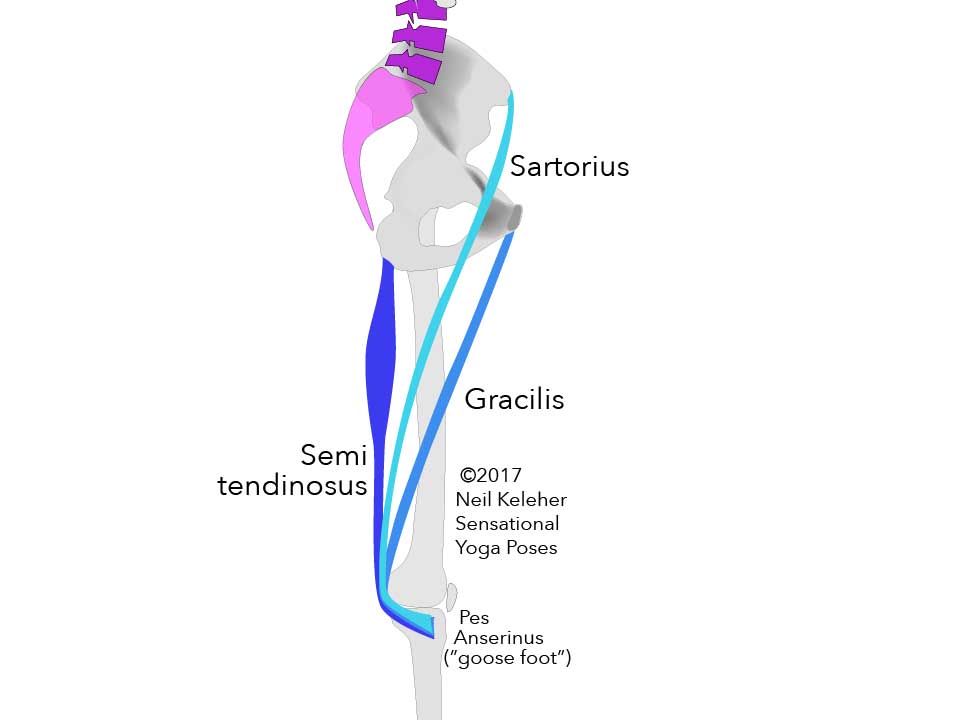
You could try giving this muscle a stable foundation by activating the foot and shin. If the foot was on the floor, the activation would help to stabilize the shin against rotation.
Another option is to stabilize the hip bone by creating an upward pull on the ASIC. You could first lift the ribs so that you can use your obliques to do this. Another option is to try to engage the hamstrings on the same side as the pain is occurring.
To activate your hamstrings you may find it helpful to first activate/stabilize the foot and shin.
If that fails, you could try creating space in the hip joint. Try using your hip muscles to reach the knee away from the hip joint so that you hip joint feels active.
Another option, since the sartorius passes over the adductor muscles and may also pass over the vastus medialis, is to activate the inner thigh muscles including the vastus medialis.
This may help to “take out any slack” in the sartorius.
If that fails you can try adjusting your positioning. If you are flexing and adducting the left leg:
The rectus femoris has a branch that attaches close the the hip joint. If your hip pain feels like it is closer to the hip joint, it may be this muscle that is being affected.
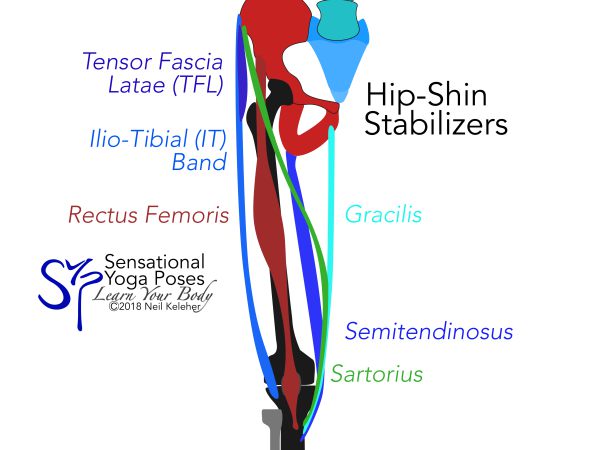
Most of the same adjustments recommended for alleviating sartorius pain can be used to deal with rectus femoris pain.
For either hip, you can also play with activating the Kua. This is a Chinese term and it refers to the muscles that pass under the inguinal ligament. Basically that’s the iliacus, and psoas muscle. However, the quadratus lumborum may also be important since it ties in with the iliacus.
With the hip flexed and adducted, it’s probably more likely the iliacus and quadratus lumborum that you have to consider. But in either case, you can focus on actively opening or closing the kua. Try both and see which, if either, helps to alleviate the hip pain.
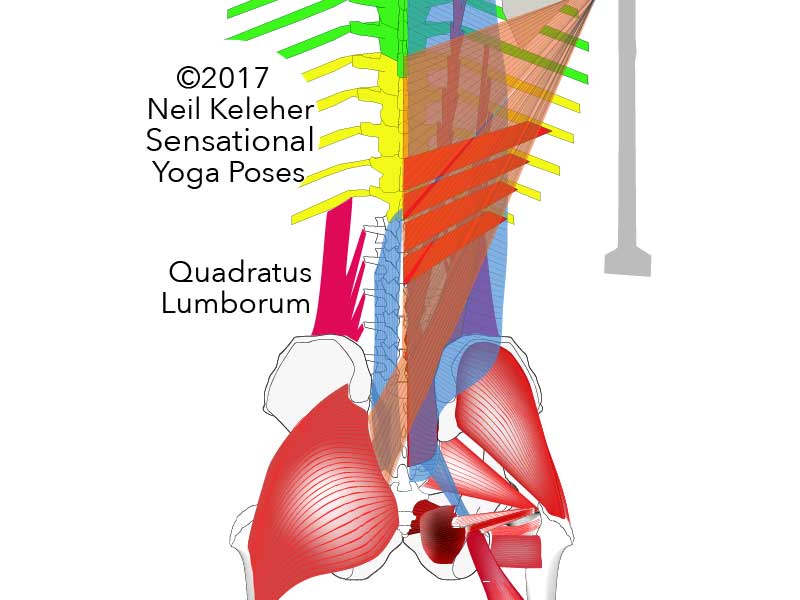
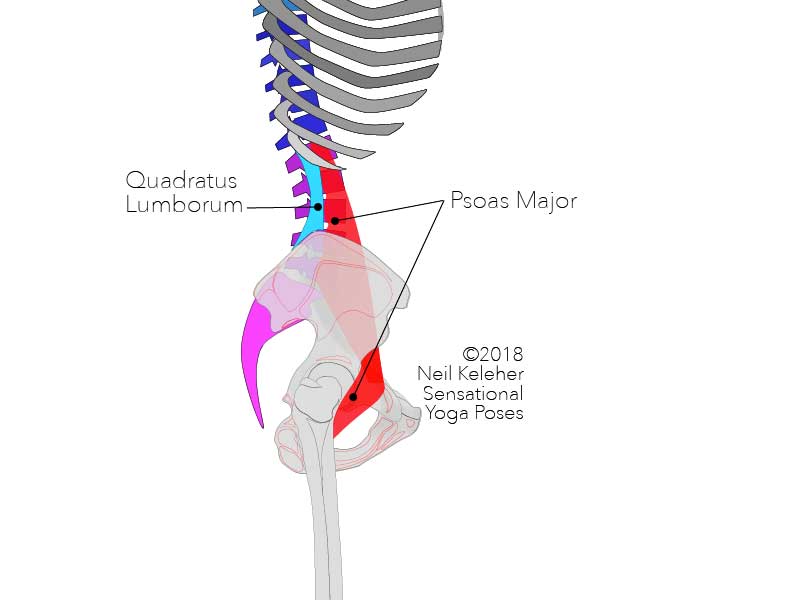
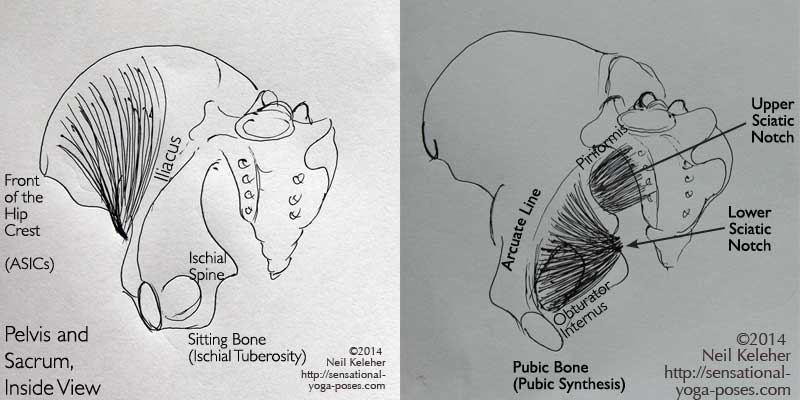
How do you open or close your kua? By focusing on the hip joint in the region of your inguinal ligament.
The inguinal ligament forms the crease that separates your belly from your thigh.
To open or close your kua you can either move your thigh relative to your pelvis or move your pelvis relative to your thigh.
By opening or closing your kua you'll be activating either the psoas or the iliacus. Your gluteal muscles may or may not activate as a result.
If you are standing with your lumbar spine relatively straight, you may find that you can open or close your kua without your glutes activating. In this case your psoas and/or iliacus are working against the weight of your upper body pressing down on the back of your pelvis via the lumbar spine.
The quadratus lumborum doesn't pass under the inguinal ligament. However, it and the iliacus in combination are the equivalent of the psoas. It can activate to help stabilize the hip bone (and lumbar spine), giving your iliacus a stable foundation from which to work on the femur. And so another option for dealing with hip pain is activating the same side and/or opposite side quadratus lumborum.
To create stability, try activating either side of the Quadratus Lumborum without allowing any movement of your pelvis or lumbar spine.
